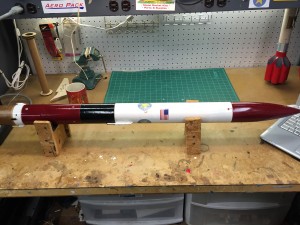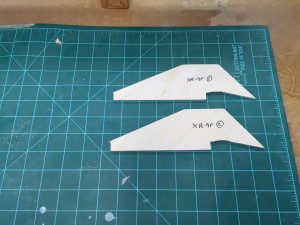Slow weather days – Means time for rocket work & maintenance…
Normally the period between Christmas and New Years day is filled with rocketry activity. Not this year! El Niño has made the weather downright disagreeable for rocketry.
It has been either raining, or just too windy — or both. So what to do? Maintenance!
Starting with the clean up & close inspection of Nesaru before her next flight. This was supposed to happen after her highest power flight to date, but that has been scrubbed due to the weather. So the maintenance routine was bumped ahead so I’d have something rocketry related to do ;-).
In her three years of flights, she has taken a lot of bangs and dings. My work was mostly cosmetic. Patching up the worst of the dings and scrapes. Along the way I am doing close inspection of the harness points, electrical, and internal support structures.
All was fine on the upper section / parachute fairing. Tomorrow I will inspect the avionics and start the inspection on the booster section / Fin can.
Earlier today, I started on a design modification to convert Comanche from a model XR-9C design to an XR-9F. Over the past several months, I’ve been occasionally running computer simulations on proposed design modifications to the XR9 series rocket to better optimize it for flights across a broader range of wind conditions. Currently, launches with XR-9C have to be scrubbed if sustained winds of 12 MPH or greater is experienced.
The Nesaru (Perseus XR6) design, on the other hand, has been optimized to fly in winds exceeding the limits of the safety codes. My desire is to give the XR9 rocket the capability to fly in a similar range.
The design modification involves a change to the fin shape. These fins will be part of a new booster section to bolt to the Comanche XR9 stack, converting it to the new XR-9F design.
The new fins have been cut out, and I am starting to sand them & airfoil them. A new motor retainer and transition piece will be ordered next week.
One of the main goals behind my modular rocket designs is to be able to make design changes by replacing pertinent sections of the rocket. This will mark the first time I have done this. Up til now, the modular design has been most useful in repairing damaged sections of the rockets from either launch / landing mishaps or from wear and tear. I am hoping to have most of the new booster work done by sometime in February.
In the meantime, the next update will be a report on the Nesaru Avionics section inspection…
((( )))

